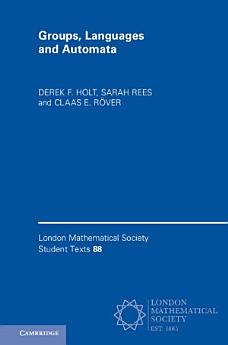Groups, Languages and Automata
2017年2月 · London Mathematical Society Student Texts 第 88 冊 · Cambridge University Press
電子書
307
頁數
report評分和評論未經驗證 瞭解詳情
關於這本電子書
Fascinating connections exist between group theory and automata theory, and a wide variety of them are discussed in this text. Automata can be used in group theory to encode complexity, to represent aspects of underlying geometry on a space on which a group acts, and to provide efficient algorithms for practical computation. There are also many applications in geometric group theory. The authors provide background material in each of these related areas, as well as exploring the connections along a number of strands that lead to the forefront of current research in geometric group theory. Examples studied in detail include hyperbolic groups, Euclidean groups, braid groups, Coxeter groups, Artin groups, and automata groups such as the Grigorchuk group. This book will be a convenient reference point for established mathematicians who need to understand background material for applications, and can serve as a textbook for research students in (geometric) group theory.
關於作者
Derek F. Holt is a professor of mathematics at the University of Warwick. He authored the successful Handbook of Computational Group Theory, which has now become the standard text in the subject, and he co-authored The Maximal Subgroups of Low-Dimensional Groups (with John N. Bray and Colva M. Roney-Dougal, Cambridge, 2013). Holt was also one of five co-authors of the seminal book Word Processing in Groups (1992) on the theory of automatic groups, and has contributed mathematical software to the Magma and GAP systems. In 1981, he was awarded the London Mathematical Society Junior Whitehead Prize.
為這本電子書評分
請分享你的寶貴意見。
閱讀資訊
智能手機和平板電腦
手提電腦和電腦
你可以使用電腦的網絡瀏覽器聆聽在 Google Play 上購買的有聲書。
電子書閱讀器及其他裝置
如要在 Kobo 等電子墨水裝置上閱覽書籍,你需要下載檔案並傳輸到你的裝置。請按照說明中心的詳細指示,將檔案傳輸到支援的電子書閱讀器。







